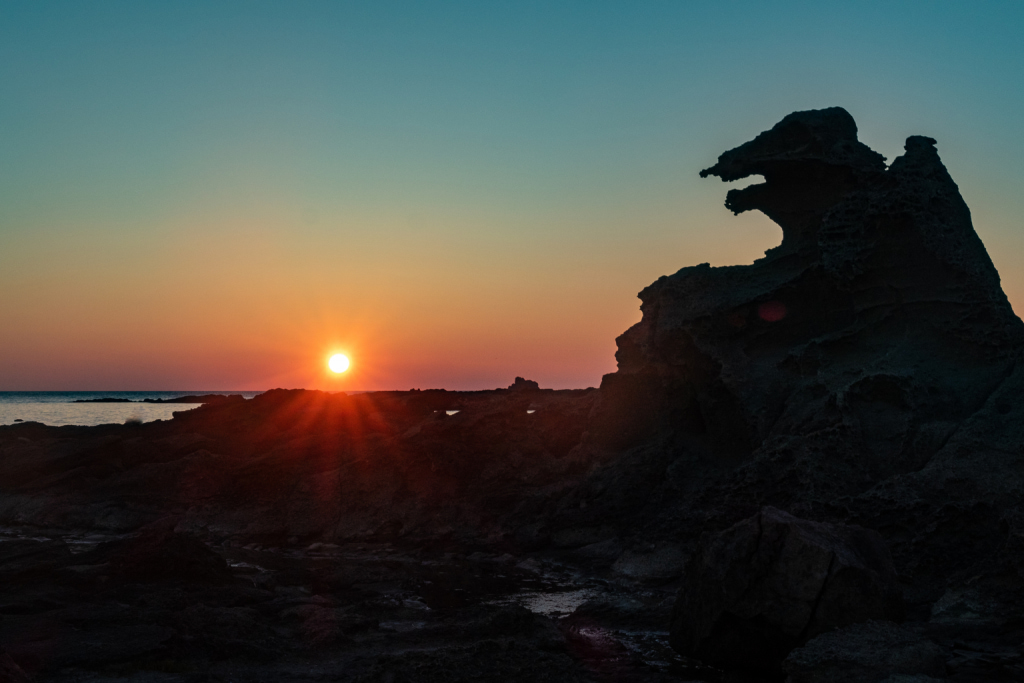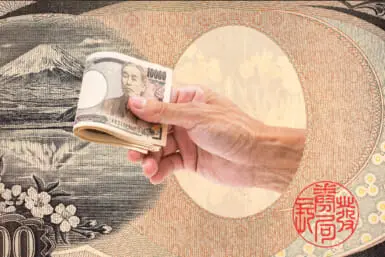Oga Peninsula juts out like a hitchhiker holding a thumbs up into the Sea of Japan from Akita Prefecture in the northern region of Tohoku. Just an hour’s drive north of Akita city, this rugged coast is rich in its own culture, nature and culinary delights. Like an old treasure map, the peninsula encompasses sacred mountains, tide pools, cedar forests, waterfalls, crater lakes and a mythology to match the magic of the land.
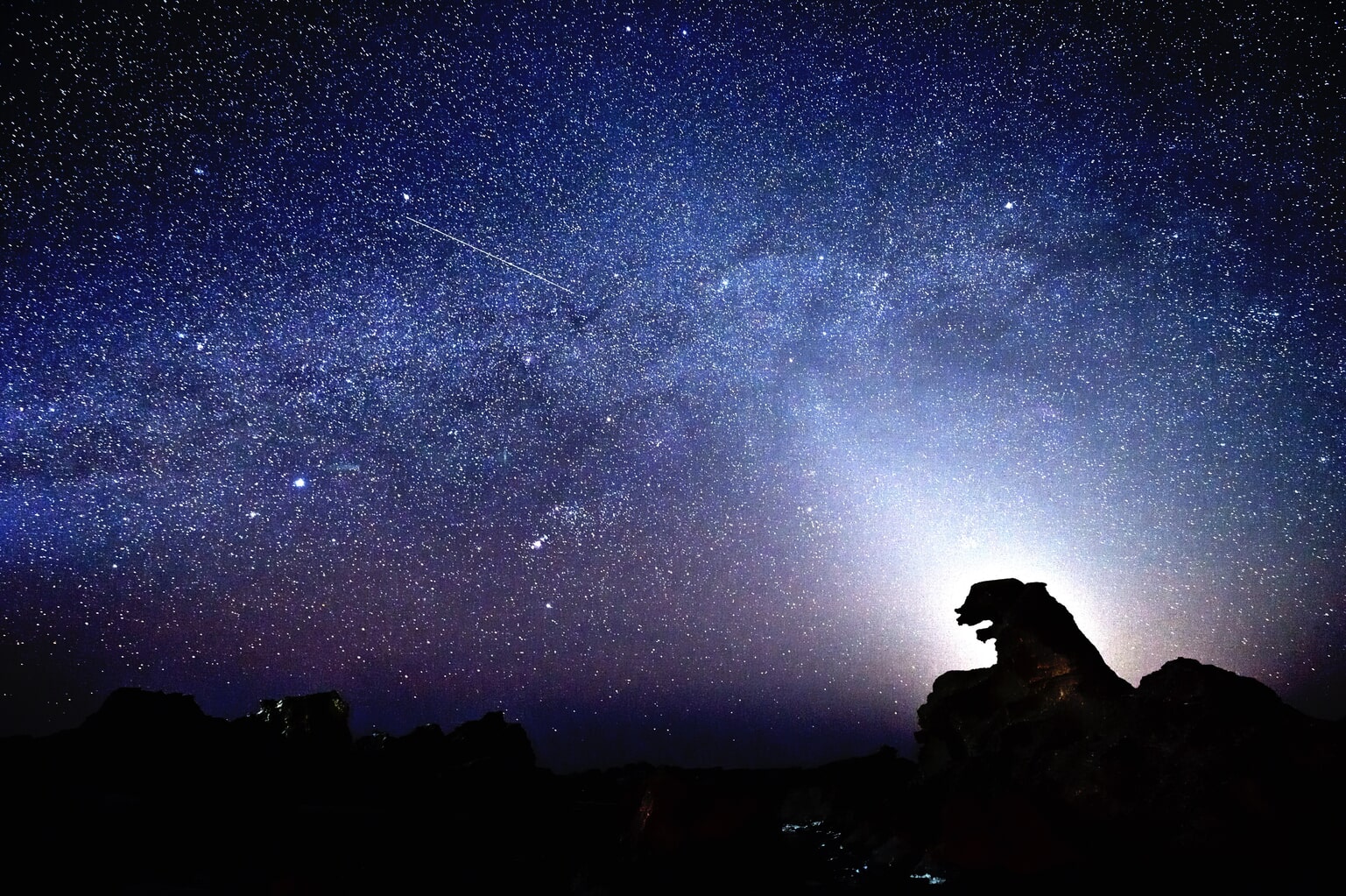
The Godzilla Rock. Photo by Takuetsu Hirano.
The Nature of Oga Peninsula
For most of its history, Oga was essentially an island due to what once was the second largest lake in Japan resting right at its neck. Now called Ogata-mura, Hachiro Lagoon was drained and filled in with soil after World War II to create rice fields to feed a hungry population. However, Oga still maintains the qualities of an island with its own distinct geographical beauty.
President of the Oga Peninsula Ogata Geopark volunteer guide group Hiroyuki Sawaki calls Mount Kanpu the “gateway to sightseeing on the Oga Peninsula” which boasts a 360-degree view. Looking out over four directions, one gets a sense of the richness of the landscape.
Driving up the coastline dotted by fishing villages, you come around a bend to see an unusually smooth stretch of beach called Unosaki. The shallow waters extend 200 meters out into the sea, sprinkled with round Azuki rocks that have been found to contain fossilized fish bones.
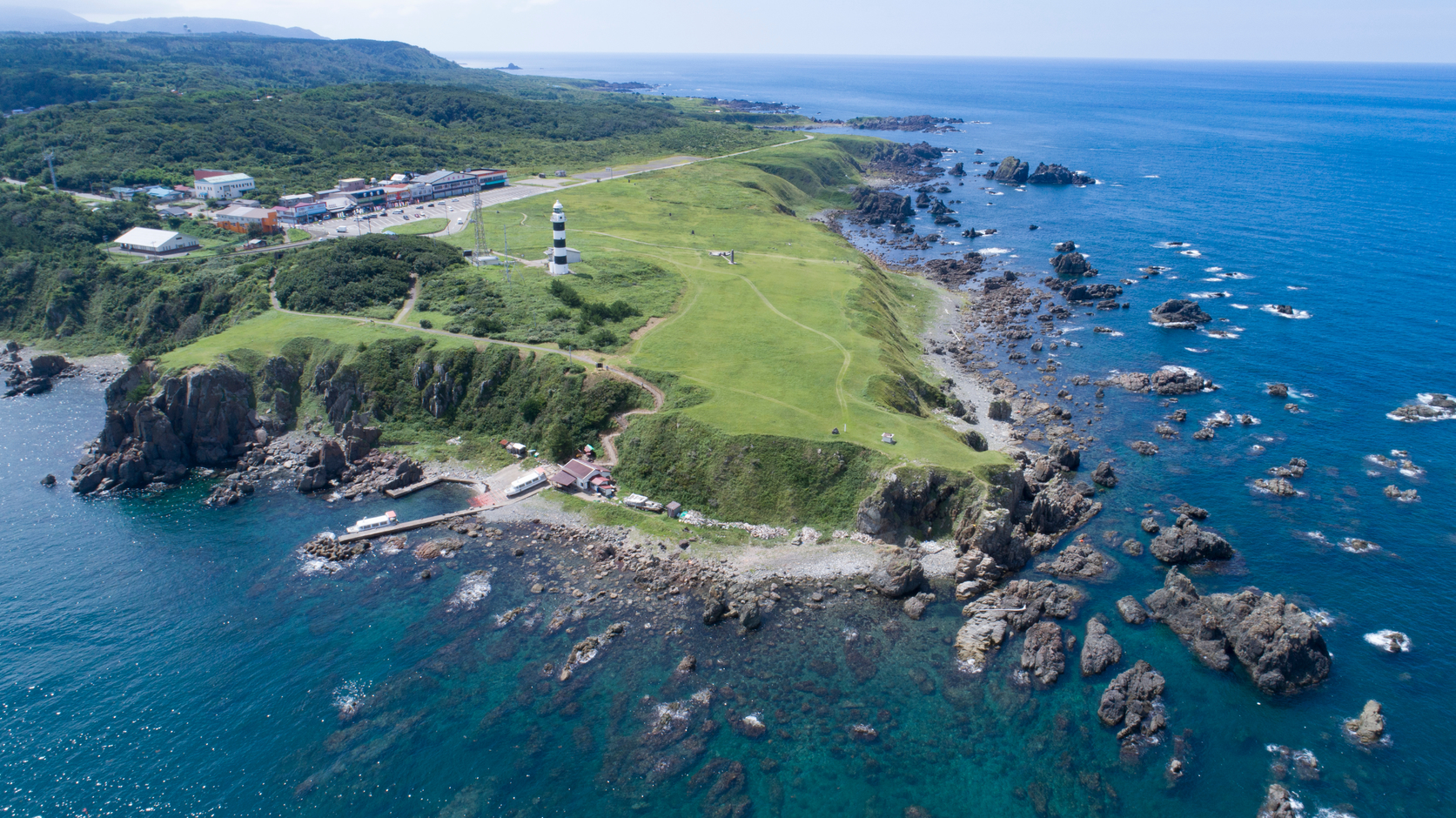
Cape Nyudozaki
After some twisting and turning, next there is an outcropping of lava-formed rocks eroded by millions of years of waves, wind and rain to chisel Godzilla Rock. First named by a local fisherman in 1996, the distinct profile of Godzilla can be seen breathing fire at sunset before standing guard against the quiet backdrop of a starry night.
Journeying further brings you higher exposing vistas beyond the steep cliff drop-offs as the road now hugs the mountain. Cut inland to go to Hachibodai, two crater lakes that overlook the sea. Continue on north until Cape Nyudozaki, a wide expanse of land that opens up to meet the sea. Built in 1898, the black and white striped lighthouse stands proud at the tip of the peninsula. Marked by a stone monument, the 40th line of latitude runs through the cape connecting you with the world while standing at the very edge of it.
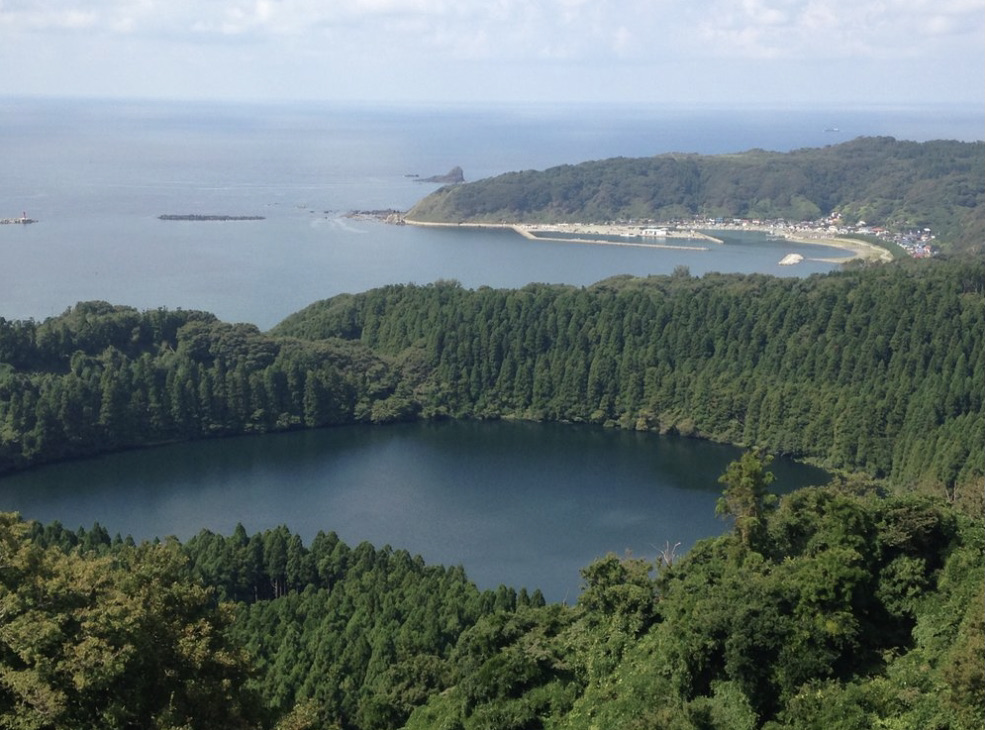
Hachibodai Crater Lake
Local Food and Drink
Try the rustic fisherman’s soup called ishiyaki nabe, a Cape Nyudozaki specialty served at Minoku. A heated rock is plunged into a wooden bowl of miso soup. It boils the broth and cooks freshly caught sea bream, leeks and tofu right in front of you, locking in the umami flavor.
Inherent to Oga food culture, migratory hatahata sandfish are bountiful in late November and December and can be prepared in various ways including pickled, dried or even as fermented izushi. You can enjoy this fish served grilled on rice and other local cuisine using Shottsuru fish sauce made from hatahata at Fukunoya where the father and son owners play Akita shamisen and patrons sing along to the folk music.
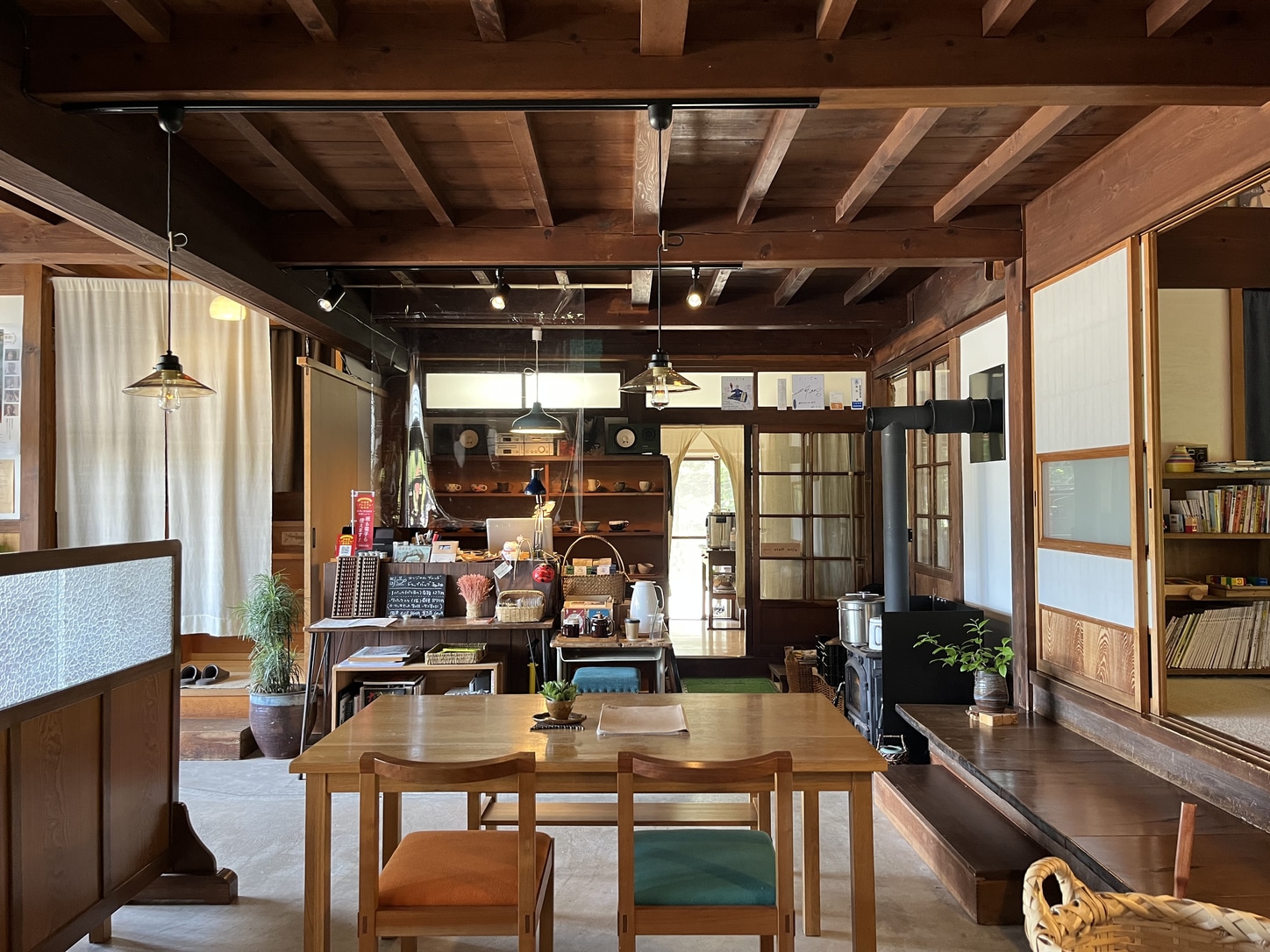
Satoyama Cafe no Ninigi
The coastal areas have abundant fresh seafood while the interior satoyama landscape enriches the local cuisine with seasonal vegetables and a range of fruit such as pears, blueberries and melons.
Satoyama, the liminal space between the village and the mountains, is under threat of depopulation. However, there are efforts to preserve this culture and in Oga the Satoyama Cafe no Ninigi (which is also a guesthouse) is a wonderful example of revitalization. The owner repurposed his family house and created a sustainable operation. Visit for a cup of coffee or a dish with fresh herbs from the garden.
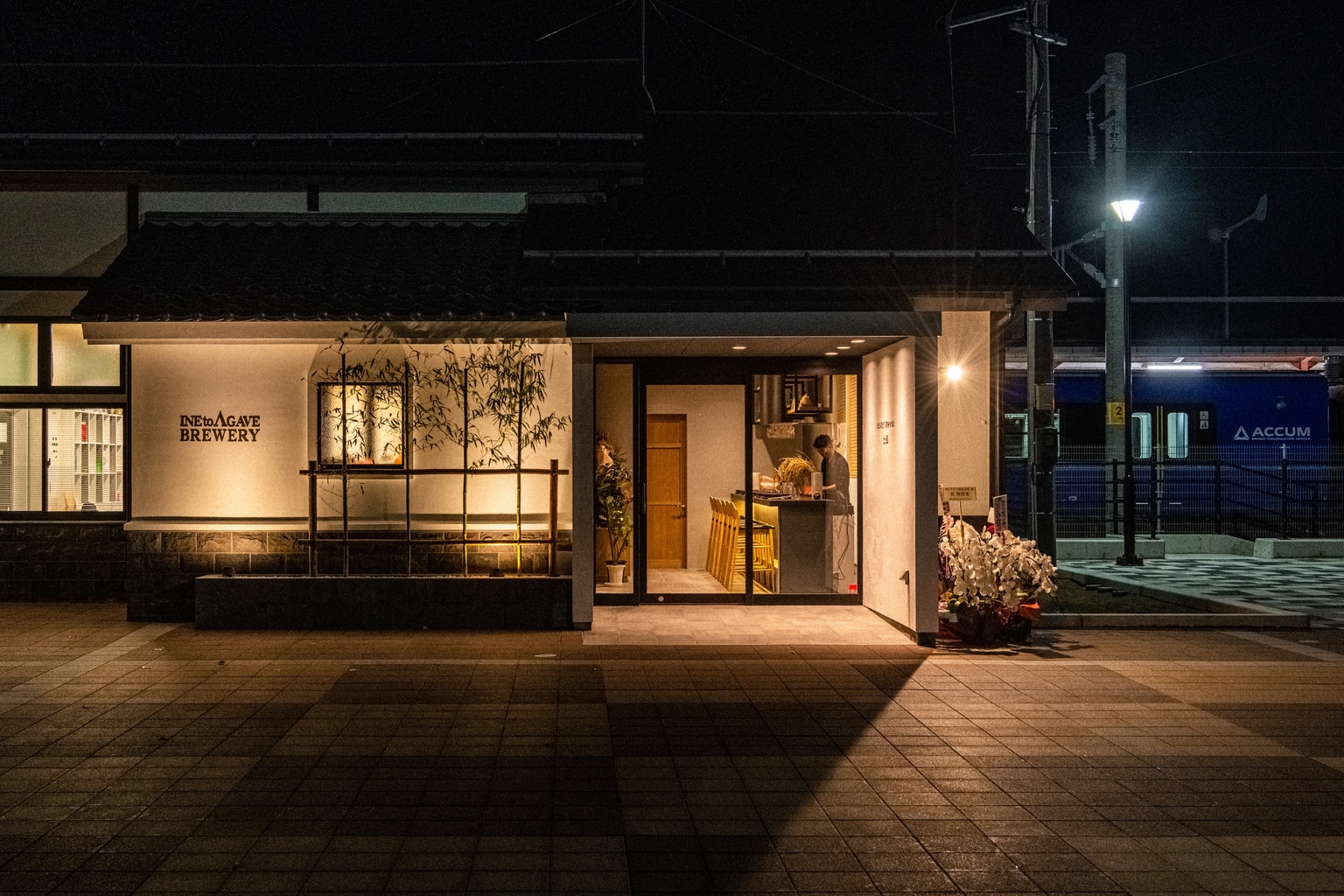
Ine to Agave Brewery
Food adventures call for sake accompaniment too. Cultivating the pristine terroir of the peninsula, craft sake brewery Ine to Agave opened in 2021 aiming to produce sake that, “captures the spirit of Oga in a bottle.” Using organically grown rice and mineral-rich spring water from waterfalls at the base of Mount Kanpu, the brewery is taking a bold approach to craft sake under the leadership of Shuhei Okazumi. Joel Bhana, a New Zealand native and long-time Tokyoite, was so impressed by Okazumi’s passion that he and his wife moved to Oga last summer to join the dedicated team.
Attached to the brewery is the sleek farm-to-table restaurant Tsuchi to Kaze that offers an eight-course omakase paired with sake. Innovative chefs detail the local ingredients with deep knowledge and affection. Each visit brings new flavors as they use fresh catch and whatever is in season in their garden.
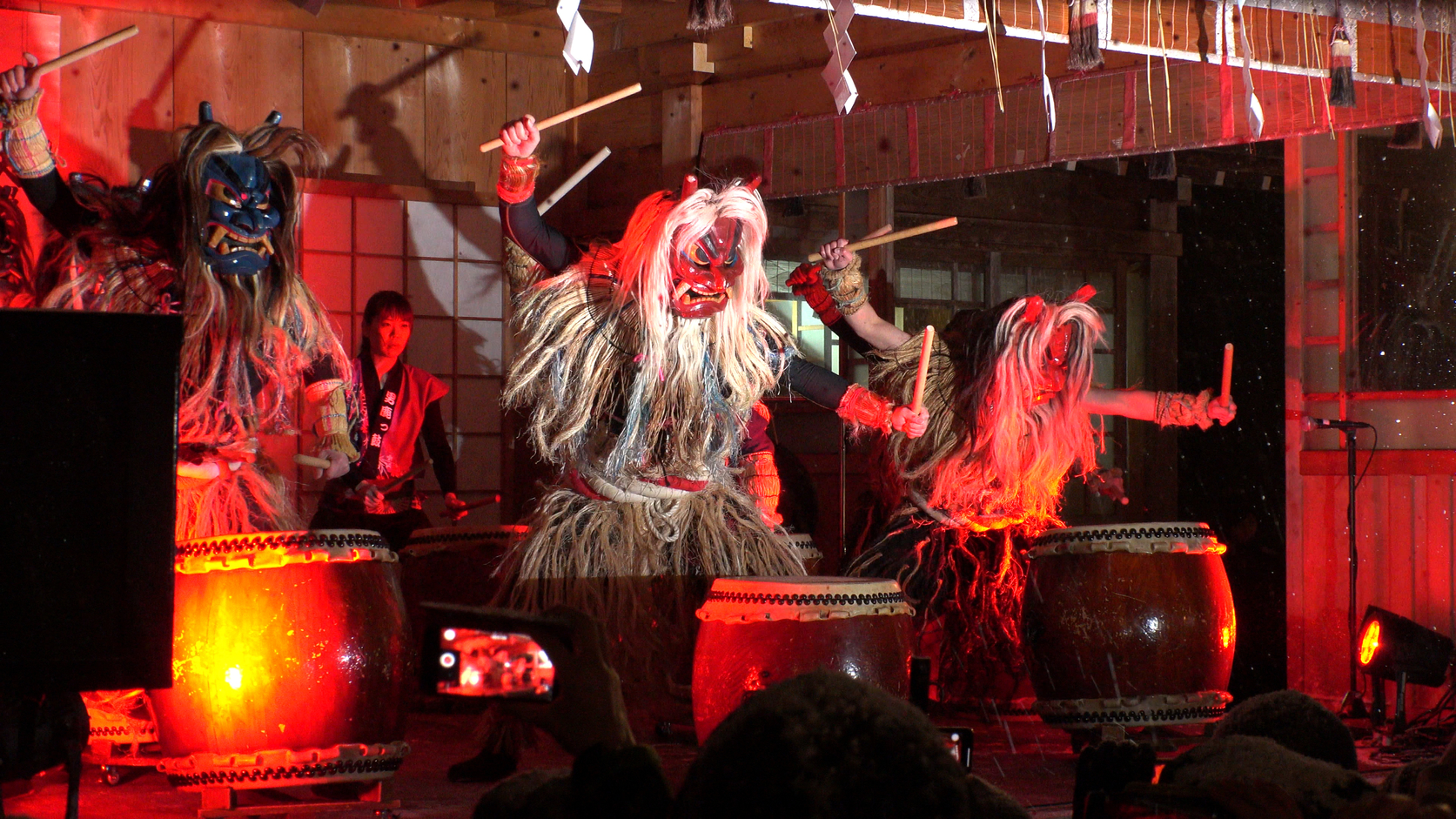
Sedo Matsuri. Photo by StreetVJ via Shutterstock.
The Unique Culture of the Oga Peninsula
Descending into villages once a year on New Year’s Eve to ward off bad spirits and admonish laziness, especially in children, as well as pray for a good harvest, Namahage is an old folk Akita tradition that was designated a UNESCO intangible cultural heritage in 2018. Each generation keeps this tradition alive by having men dress up as Namahage in straw costumes and hand-carved masks. Stomping and yelling as they visit homes in the neighborhood, they drink offerings of sake and usher in the New Year.
In Oga, the Namahage differs from the rest of Akita Prefecture. There is the Namahage Daiko collaborative drumming, powerfully weaving music with mythology. You can see it year-round at Gofu Hall near the Oga hot springs. Drummers don the terrifying masks, personifying the deities and channeling the legend into a transformative show.
Masashi Iwasawa, who plays for the drum unit Otodaya, explains, “Namahage daiko is more than just a traditional performance. It captures the depth and mystique of Namahage.“
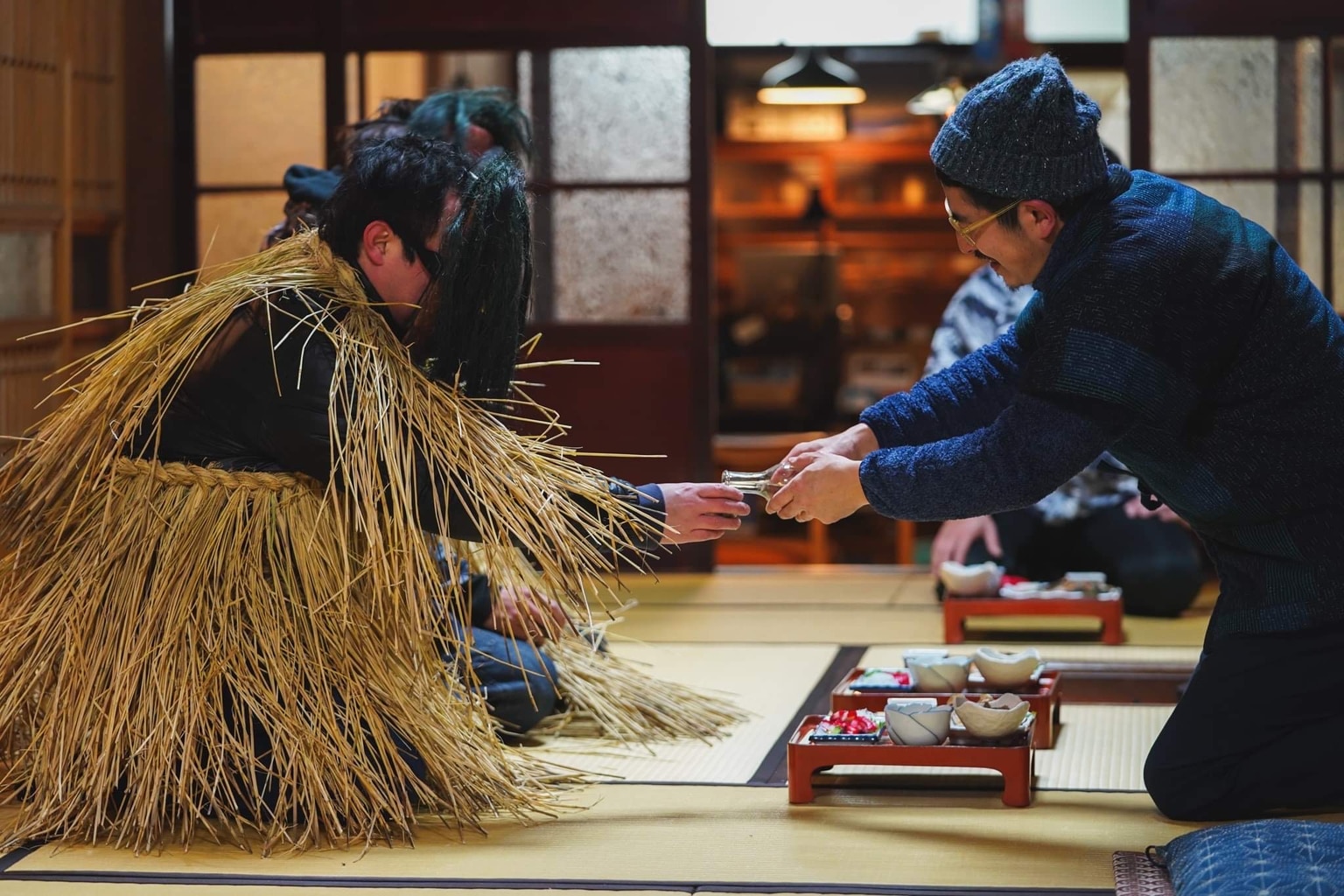
Namahage at Satoyama Cafe no Ninigi
To delve deeper into Namahage check out the Namahage Museum on Shinzan mountain. Bringing the visceral experience to life, the adjacent Oga Shinzan Folklore Museum recreates the Namahage New Year’s Eve visit in a thatched roof house that smells of embers from the irori hearth.
Finally, there’s the unique Sedo Matsuri held every February at the nearby Shinzan Shrine. Sparks fly off a bonfire into the black sky as dozens of torch wielding Namahage slowly emerge from the cedar forest. Rolling in like thunder, the growling grows louder as flashes of fire flicker through the trees. Appearing out of the darkness, the Namahage spill into the crowd of festival-goers eager for the thrill of being both scared and blessed. Quick to pick up any straw that has fallen from the kera costumes, people tie the pieces around their heads, serving as an amulet for an auspicious year ahead.
Asuka Sato, a teacher at the Oga Marine High School and Namahage daiko drummer, values the sense of connection this tradition fosters for the community. She expressed her wish for viewers to feel the excitement by simply asking “Does your heart and soul tremble?”
This article is a collaboration between TW and Akita International University, Global Communication Practices (graduate school)

